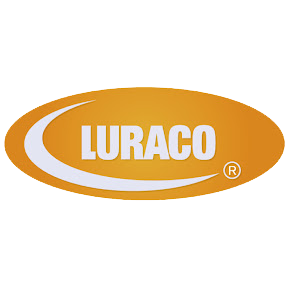Top Massage Chair Brands Based In japan Brands
Here's what we recommend for:
Product Selection
3.9/5
Panasonic maintains a small, tightly-engineered portfolio. The MAF1 is a reliable entry into Japanese massage tech, while the MAN1 and MAK1 anchor the mid and flagship levels. These models vary in roller depth, program count, and frame styling, but all share Panasonic’s massage engine and therapeutic design language. There are no budget chairs or oversized recliners, which makes the brand less flexible for buyers wanting variety or aesthetic diversity. But...
Customer Support & Warranty
4.3/5
Panasonic provides 5 years on the frame, 3 years on parts, and 1 year of in-home service. Customer support is managed through authorized U.S. distributors, and buyers consistently report clear, courteous responses. Availability of replacement parts is strong, and because the mechanical systems are standardized, repair logistics are relatively easy even years down the road.
Build Quality & Durability
4.9/5
Build quality is Panasonic’s standout trait. Internal components are robotically assembled and QC-tested in Japan, using low-noise brushless motors, shock-isolated frames, and high-density foam padding. Upholstery is designed to resist heat, cracking, and long-term abrasion. Users routinely report 7–10 years of smooth performance, and motors retain consistent torque even after heavy use. These chairs are made to run quietly, confidently, and without decline over time.
Massage Variety
4.5/5
Panasonic’s flagship MAK1 and mid-range MAN1 feature the brand’s signature Junetsu ultra-kneading technique, which uses fast, circular micro-movements to mimic the precise thumb pressure of Shiatsu practitioners. The Real Pro 3D system allows adjustable depth, speed, and rhythm across different muscle groups. Even the more affordable MAF1 includes S-Track rollers and multiple auto programs with kneading, tapping, and stretch sequences. The rollers feel methodical, consistent, and deeply therapeutic—they’re designed to...

Designed and manufactured in Japan with full safety certifications

Home to the iconic Junetsu kneading technique

FDA-registered and UL-certified for therapeutic use

Focused on muscle therapy, posture correction, and quiet operation

Clean, compact frames that fit into modern living spaces

Exceptionally smooth roller transitions and proven longevity
Product Selection
3.7/5
Fuji’s product range is focused and minimalist. The flagship JP-3000 AI and the JP-1100 form the current generation, while legacy chairs like the JP-1000 may still be found through distributors. There's no low-end model or compact alternative. This simplicity supports Fuji’s identity as a clinically validated solution rather than a mass-market brand, but limits options for buyers who want variation in style, footprint, or pricing. Feature / Model MR-3000 J6900...
Customer Support & Warranty
4.3/5
Fujiiryoki chairs are distributed through specialized partners in the U.S., with warranty coverage that includes 3 years on parts, 5 years on the frame, and 1 year in-home labor. Support is courteous, responsive, and bolstered by the brand’s reputation for low failure rates. Parts are sourced from Japan, so repair windows may be longer, but the system is organized and professionally managed.
Build Quality & Durability
4.8/5
Like all Japanese-manufactured massage chairs, Fuji’s engineering quality is outstanding. Components are built in ISO-certified factories with low-friction motors, EMI-tested circuit boards, and tight mechanical tolerances. Everything from the remote to the recline system feels solid, deliberate, and reliable. Chairs last 7–10 years with basic maintenance, and moving parts age gracefully without dramatic noise or performance loss.
Massage Variety
4.4/5
The JP-3000 AI features Fuji’s patented 4D AI Mecha Pro system, which dynamically adjusts roller speed, depth, and pressure based on body tension detected through internal biometric sensors. The rollers move with surgical control, delivering ultra-precise kneading, tapping, and acupressure with Japanese-style timing. Mid-range models like the JP-1100 retain 3D control and many of the same technique profiles, though without real-time adaptation. The sessions feel deliberate and rhythmic—not overwhelming—and excellent...

Invented the massage chair in 1954; legacy of continuous innovation

Japan’s best-selling therapeutic chair brand

Patented 4D AI roller system with biometric sensing

Medical Device Certified in Japan for therapeutic use

Quiet, tightly controlled roller and airbag sequencing

Minimalist, upright design suited for clinical or home environments
Product Selection
3.6/5
Inada’s lineup includes legacy models like the DreamWave M.1 and advanced chairs like the Robo-Therapist 7. There’s no ultra-budget option or compact recliner. The brand focuses only on mid and high-tier medical-use chairs, designed for longevity and clinical application. This narrowed scope supports the brand’s purpose—but may limit its appeal to users looking for stylistic diversity or multiple sizing options. Feature / Model No direct equivalent in this category DreamWave...
Customer Support & Warranty
4.2/5
U.S. service is handled by authorized distributors, with 3 years on parts, 1 year labor, and 5 years on the frame standard. Inada’s reliability means fewer claims, and most users report consistent, professional communication. Because parts are imported from Japan, shipping may take longer in some cases, but fulfillment and instructions are typically thorough and transparent.
Build Quality & Durability
4.7/5
Every Inada chair is hand-finished in Japan, using high-grade motors, gear sets, and upholstery. Components are built for multi-year daily use, and the chassis and massage arms retain calibration for long periods without service. Wear parts like air pumps and control boards are replaceable, and service life often exceeds 10 years with routine use. The tactile quality is evident from the first session—it feels like equipment, not furniture.
Massage Variety
4.3/5
Inada chairs focus heavily on full-body Shiatsu, with programs that replicate real acupressure movements using slow-rolling, deep-kneading techniques. The DreamWave M.1 uses a wide seat-tilt system to create a swaying motion that mimics the hands of a practitioner, while the Robo-Therapist 7 applies variable-depth rollers along the spine with programmable pressure. Unlike brands that rely on intensity for effect, Inada’s massage feels therapeutically calm, with sustained pressure and long holds,...

Pioneer of Shiatsu-style automated massage chairs since 1962

Known for iconic models like DreamWave and Robo-Therapist

Patented full-body stretching and side-to-side swaying

Quiet, rhythmically soothing roller mechanics

Therapeutic design philosophy rooted in traditional acupressure

Made in Japan with long service life and clinical-grade alignment
How to Buy a Massage Chair: The Complete Guide
Buying a massage chair is a big decision. Not just because of the cost, but because it's a long-term investment in your health, comfort, and daily routine. This guide is here to help you cut through marketing terms, understand the tech, and choose the right chair based on your real needs—not just flashy features.
Step 1: Know What You’re Buying It For
Start by asking yourself: Why do I want a massage chair?
Are you trying to relieve lower back pain? Recover from workouts? Unwind after work? Or do you just want the luxury of an at-home spa experience?
If pain relief is your top priority, look for features like strong roller pressure, deeper massage depth (3D or 4D), and heated therapy. For general relaxation, you may not need the most advanced system—something with a few auto programs, Zero Gravity recline, and gentle rollers may be enough.
You also need to consider body size. Most chairs fit people between 5’0” and 6’4”, but if you’re outside that range—or on the heavier side—look for models that explicitly support big-and-tall users. Also think about space. Many chairs need 10–12 inches behind them to recline fully, but some models slide forward as they recline, requiring as little as 2–4 inches from the wall.
Step 2: Understand Roller Technology
Rollers are the heart of every massage chair. They move up and down your spine, side to side across your back, and in some cases, even in and out for deeper pressure.
There are a few types of roller systems:
-
2D rollers move up-down and left-right. They’re found in entry-level chairs and provide a surface-level massage.
-
3D rollers add in-out motion. They press into the back, simulating deeper tissue massage. Most people looking for real relief should start here.
-
4D rollers are like 3D, but they also vary in speed and rhythm. This creates a more lifelike feel—similar to how a human hand might vary pace or pressure naturally.
If you want a chair that can really work out tight muscles or replicate a skilled therapist’s hand, 4D is the sweet spot.
Step 3: Learn the Track Types
The track is what the rollers ride along.
-
S-Track follows the natural curve of your spine from neck to tailbone. It gives good upper-body massage, especially for back and shoulder pain.
-
L-Track or SL-Track continues into the seat and under the thighs. If you want your glutes, hamstrings, or sciatic nerve areas targeted, this is what you want.
-
Flex-Track or hybrid designs allow for both decompression stretches and full-length gliding, giving the benefits of S-Track stretch with L-Track reach.
Step 4: Don’t Ignore Zero Gravity
Zero Gravity positioning reclines your body so your knees rise above your heart. This reduces spinal pressure, improves circulation, and makes the massage feel deeper.
Most modern chairs have at least one Zero-G position. Some let you cycle through two or three different angles for reading, watching TV, or full-body decompression. It's not just a gimmick—it's one of the most effective ways to make a massage feel relaxing and restorative.
Step 5: Understand the Role of Airbags and Heat
Massage chairs often come with dozens of airbags that inflate and deflate to squeeze your shoulders, arms, waist, calves, and feet.
Don’t assume more airbags is always better. It’s more important that the zones you care about (like your calves or arms) are actually covered. Calf kneading, foot rollers, and adjustable air intensity are often much more valuable than sheer airbag count.
Heat therapy is another game-changer—especially when it moves with the rollers. Static lumbar heat pads are common, but some chairs offer heated rollers or calf heaters that help loosen muscles and enhance the massage effect.
Step 6: Figure Out Which Feature Level You Need
Massage chairs are typically sold in three tiers:
-
Entry-level models come with basic 2D rollers, a few auto programs, and basic lumbar heat. They’re ideal for casual users or small apartments.
-
Mid-range models usually include 3D rollers, better coverage, 40–60 airbags, dual-zone heating, and Zero-G. This tier works for most families or daily use.
-
Flagship models offer 4D or dual-mechanism rollers, AI body scan, moving heat, touchscreen controls, and stretch programs. They’re great for athletes, chronic pain users, or tech lovers.
Step 7: Ask the Right Pre-Purchase Questions
Before you buy, make sure you:
-
Measure your floor space, including full recline clearance
-
Check if the chair fits through your doorways
-
Verify your height and weight are supported
-
Understand the warranty: how many years on parts, frame, and labor?
-
Ask if there’s in-home service or just parts shipping
-
Look for reviews from users who’ve owned it for over a year
Also, try the chair if you can—either in a showroom or via video consultation with a dealer. What looks good on paper might not feel right for your body.
Step 8: Choose Where to Buy
You can buy from a local showroom, a big-box store, or online. Each has trade-offs.
-
Showrooms let you try before you buy and often include white-glove delivery, but prices can be higher.
-
Big-box stores (like Costco) offer great return policies and seasonal deals.
-
Online retailers have the widest selection but can vary in service quality. Be sure they offer a fair return window and honor warranties.
Step 9: Match Tech to Your Goals
If you're mostly looking to unwind after work, a 2D or light 3D chair with Zero-G and heat will likely satisfy you. If you're recovering from workouts, or you sit all day and deal with back tension, look for a 3D or 4D system with calf rollers and deep glute coverage. And if you’re managing chronic pain, opt for adjustable roller pressure, multiple heat zones, and good post-sale support.
Final Thoughts
Buying a massage chair isn’t just about tech specs. It's about how the chair will fit your body, your lifestyle, and your home. Understand your goals, test the comfort, and don’t let feature overload distract you from what actually matters: how it feels when you sit in it and close your eyes. Choose a chair that gives you the peace and relief you’re looking for—and you’ll thank yourself every day you come home to it.
KEEP READING














.png)

